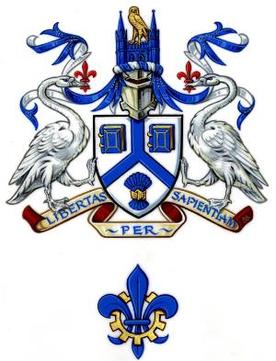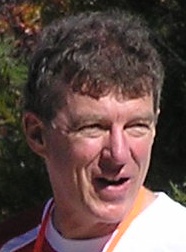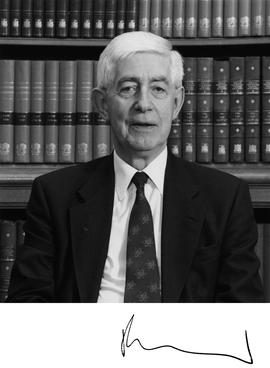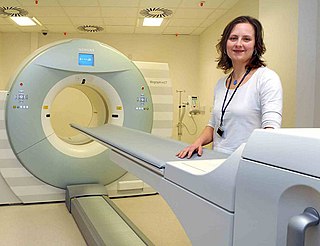Related Research Articles

Lund University is a public research university in Sweden and one of northern Europe's oldest universities. The university is located in the city of Lund in the province of Scania,Sweden. It traces its roots back to 1425,when a Franciscan studium generale was founded in Lund. After Sweden won Scania from Denmark in the 1658 Treaty of Roskilde,the university was officially founded in 1666 on the location of the old studium generale next to Lund Cathedral.

Paul Christian Lauterbur was an American chemist who shared the Nobel Prize in Physiology or Medicine in 2003 with Peter Mansfield for his work which made the development of magnetic resonance imaging (MRI) possible.

Charles Hard Townes was an American physicist. Townes worked on the theory and application of the maser,for which he obtained the fundamental patent,and other work in quantum electronics associated with both maser and laser devices. He shared the 1964 Nobel Prize in Physics with Nikolay Basov and Alexander Prokhorov. Townes was an adviser to the United States Government,meeting every US president from Harry S. Truman (1945) to Bill Clinton (1999).

The University of Hull is a public research university in Kingston upon Hull,a city in the East Riding of Yorkshire,England. It was founded in 1927 as University College Hull. The main university campus is located in Hull and is home to the Hull York Medical School,a joint initiative with the University of York. Students are served by Hull University Union.

The University of Lincoln is a public research university in Lincoln,England,with origins dating back to 1861. It gained university status in 1992 and its present name in 2001. The main campus is in the heart of the city of Lincoln alongside the Brayford Pool. There are satellite campuses across Lincolnshire in Riseholme and Holbeach and graduation ceremonies take place in Lincoln Cathedral.

Raymond George Gosling was a British scientist. While a PhD student at King's College,London he worked under the supervision of Maurice Wilkins and Rosalind Franklin. The crystallographic experiments of Franklin and Gosling,together with others by Wilkins,produced data that helped James Watson and Francis Crick to infer the structure of DNA.

Ian Hector Frazer is a Scottish-born Australian immunologist,the founding CEO and Director of Research of the Translational Research Institute (Australia). Frazer and Jian Zhou developed and patented the basic technology behind the HPV vaccine against cervical cancer at the University of Queensland. Researchers at the National Cancer Institute,Georgetown University,and University of Rochester also contributed to the further development of the cervical cancer vaccine in parallel.
Frank Farmer OBE was an English physicist,and a pioneer in the application of physics to medicine,particularly in relation to the practical aspects of cancer treatment by radiation.
Stuart Palmer FREng,also known as S. B. Palmer,is the honorary secretary of the Institute of Physics,and was the deputy vice-chancellor of the University of Warwick between 1999 and 2009. He is an emeritus professor of physics at Warwick who has worked in condensed matter physics and engineering physics and has extensively exploited the technique of ultrasound.

Peter Neil Temple Wells CBE DSc FMedSci FREng FIET FInstP FLSW FRS was a British medical physicist who played a major role in the application of ultrasound technology in medicine.

Roman Grigorievich Maev,is a Canadian professor of physics at the University of Windsor,distinguished university professor,the Foreign Member of the Russian Academy of Sciences (RAS) (2019),full professor in physics (2005),Dr. Sc. (2002),Ph. D. (1973). Dr. Maev is the founding director of the Institute for Diagnostic Imaging Research at the University of Windsor.
Donal Donat Conor Bradley is the Vice President for Research at King Abdullah University of Science and Technology (KAUST),Saudi Arabia. From 2015 until 2019,he was head of the Mathematical,Physical and Life Sciences Division of the University of Oxford and a Professor of Engineering Science and Physics at Jesus College,Oxford. From 2006 to 2015,he was the Lee-Lucas Professor of Experimental Physics at Imperial College London. He was the founding director of the Centre for Plastic Electronics and served as vice-provost for research at the college.
Donna Blackmond is an American chemical engineer and the John C. Martin Endowed Chair in Chemistry at Scripps Research in La Jolla,CA. Her research focuses on prebiotic chemistry,the origin of biological homochirality,and kinetics and mechanisms of asymmetric catalytic reactions. Notable works include the development of Reaction Progress Kinetic Analysis (RPKA),analysis of non-linear effects of catalyst enantiopurity,biological homochirality and amino acid behavior.
Barry Ramachandra Rao was an Indian space physicist and the vice chairman of the University Grants Commission of India. Known for his pioneering research in radio physics,Rao was a Member of Parliament of the Rajya Sabha and an elected fellow of all the three major Indian science academies viz. Indian Academy of Sciences,Indian National Science Academy and National Academy of Sciences,India. The Council of Scientific and Industrial Research,the apex agency of the Government of India for scientific research,awarded him the Shanti Swarup Bhatnagar Prize for Science and Technology,one of the highest Indian science awards for his contributions to Physical Sciences in 1965.
Erode Subramanian Raja Gopal was an Indian condensed matter physicist,a former professor at the Indian Institute of Science and a former director of the National Physical Laboratory of India. Known for his research in condensed matter physics,Raja Gopal was an elected fellow of all the three major Indian science academies –the Indian National Science Academy,the National Academy of Sciences,India,and the Indian Academy of Sciences –as well as a member of the Institute of Physics. He was a former CSIR emeritus scientist,an alumnus of the University of Oxford and the author of three reference texts in condensed matter physics. The Council of Scientific and Industrial Research,the apex agency of the Government of India for scientific research,awarded him the Shanti Swarup Bhatnagar Prize for Science and Technology,one of the highest Indian science awards,for his contributions to Physical Sciences in 1978.

Heather Ann Williams is a British medical physicist working as a Consultant Medical Physicist for Nuclear Medicine at The Christie NHS Foundation Trust. She is also a lecturer in the Faculty of Biology,Medicine and Health at University of Manchester,as well as the University of Salford and University of Cumbria.
James (Jim) Gegan Miller is an American physicist,engineer,and inventor whose primary interests center around biomedical physics. He is currently a professor of physics,Medicine,and Biomedical Engineering,emeritus,at Washington University in St. Louis,where he holds the Albert Gordon Hill Endowed Chair in the Faculty of Arts and Sciences. He is notable for his interdisciplinary contributions to biomedical physics,echocardiography,and ultrasonics.
Richard Victor Jones was a professor of applied physics at Harvard University and a pioneer in semiconductors. He was one of the first four recruits by William Shockley to help develop technologies at Shockley Semiconductor Laboratory.
References
- 1 2 "Professor Christian Langton". Queensland University of Technology . Retrieved 28 March 2018.
- 1 2 "100 UK university discoveries". The Guardian . London. 5 July 2006. Retrieved 28 May 2011.
- ↑ "Hull Firsts Trail – notable people, places and events in Kingston-upon-Hull".